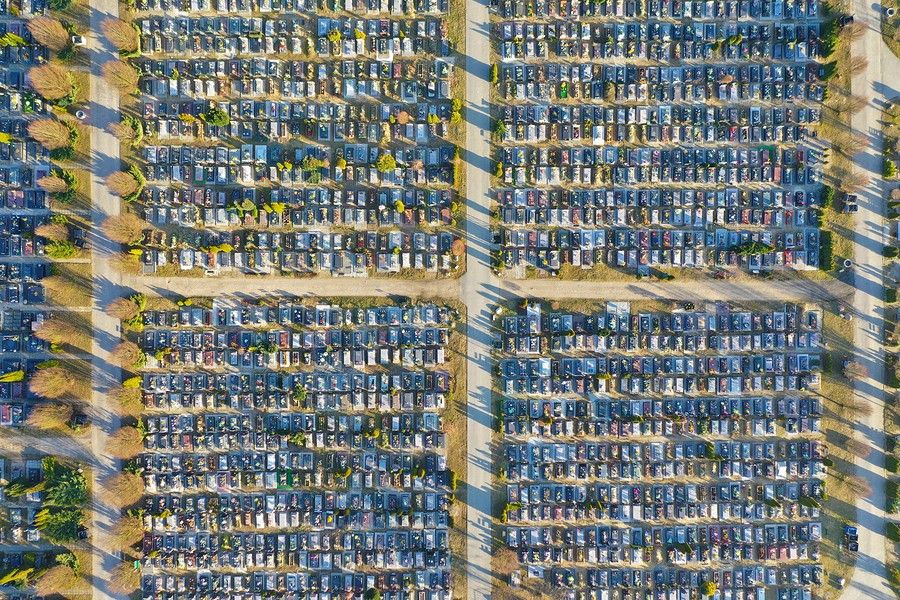When you’re in charge of creating, maintaining, and organizing a cemetery’s records, you know how much of a challenge it can be. The grounds may have been in use for 100+ years, with some records being on paper, some stored on a thumb drive, and some lost altogether. And although you know the lay of the land, sifting through these places to find specific information on a burial site or an available plot isn’t efficient, especially in the digital age.
If you’re thinking, “There has to be a better way,” you’re right — geographic information systems (GIS) and ground penetrating radar (GPR) are powerful tools that can help you improve your cemetery recordkeeping strategy. Below we’ve listed some of the benefits of pairing GIS and GPR to create a scalable, accurate system that will work for decades to come.
Ensuring proper burial location
When you rely on paper recordkeeping and mapping, burials don’t always happen exactly where they are supposed to — they might happen five feet to the left of the intended plot, in an entirely different row, or anywhere in between. Unfortunately, accidentally misplacing burial sites can cause confusion among staff and visitors and could also upset those who chose a specific plot for their loved one. Plus, when burials don’t happen where they’re supposed to, a serious logistical issue can arise. If each plotline is shifted even just a couple of inches in one direction over the years, eventually, you’ll end up crossing adjacent property lines.
Using GIS to map your property and plotlines can help you ensure burials are happening in the appropriate location. Using an existing aerial photo from your local municipality or a new drone-captured photo, a GIS professional can plot and map out the exact layout of your grounds, right down to the coordinate. Plus, you can digitally attach documentation such as death certificates or purchase agreements to each plot, so you know which ones are unavailable. Using this database as your go-to reference, you don’t have to worry about burial inaccuracy.
Confirming existing burial locations
When you pair GPR with GIS, you can get even more valuable data for your records. For example, using GPR, an operator can positively identify suspect burial locations without being invasive. That way, the groundskeeper can ensure that intact headstones, monuments, and other markers are, in fact, accurately marking the site.
Further, if you suspect a burial because there’s an unaccounted-for weathered stone, piece of wood, or blank marker on the grounds, GPR can confirm if these are designating a burial site.
Identifying unmarked graves
Cemeteries are full of history, and sometimes, unmarked burial sites. In fact, a Plano, Texas, historical preservation group recently used GPR to scan two cemeteries, discovering 29 unmarked graves. In this particular case, it’s suspected that markers weathered away with time, as they were likely made of wood or leather.
Records might not exist for these unmarked graves for a number of reasons, like damage, decay, or just poor recordkeeping practices. Giving your grounds a full scan with GPR to find unmarked graves will help you avoid selling that plot of land, enrich the history of your property, and give you the opportunity to mark these previously unknown sites.
Creating a scalable digital recordkeeping system
One of the biggest hurdles for cemetery personnel is digitizing historical records — and then creating an organization system that works at scale. No matter the size of your cemetery, a GIS-powered database is your biggest ally. With GIS, you can connect digital files — death certificates, purchase agreements, maintenance records, etc. — with a physical location. And you can create as many records as you want.
As an example, using GIS software, you can click on a single burial plot and you’ll see data including a picture of the headstone, the person’s name, birth date, and death date, and a lot boundary and number. All of this information is stored in the cloud, so when you make additions or changes, your records are secured and updated in real-time. With this strategy, you don’t need to create your own filing system, store documents on flash drives, or send a memo about where to find records. As long as your staff has the link to your web map, they’ll have all the information they need right at their fingertips.
—
Are you ready to get started on your cemetery mapping project? Contact us today to connect with a GIS specialist.

